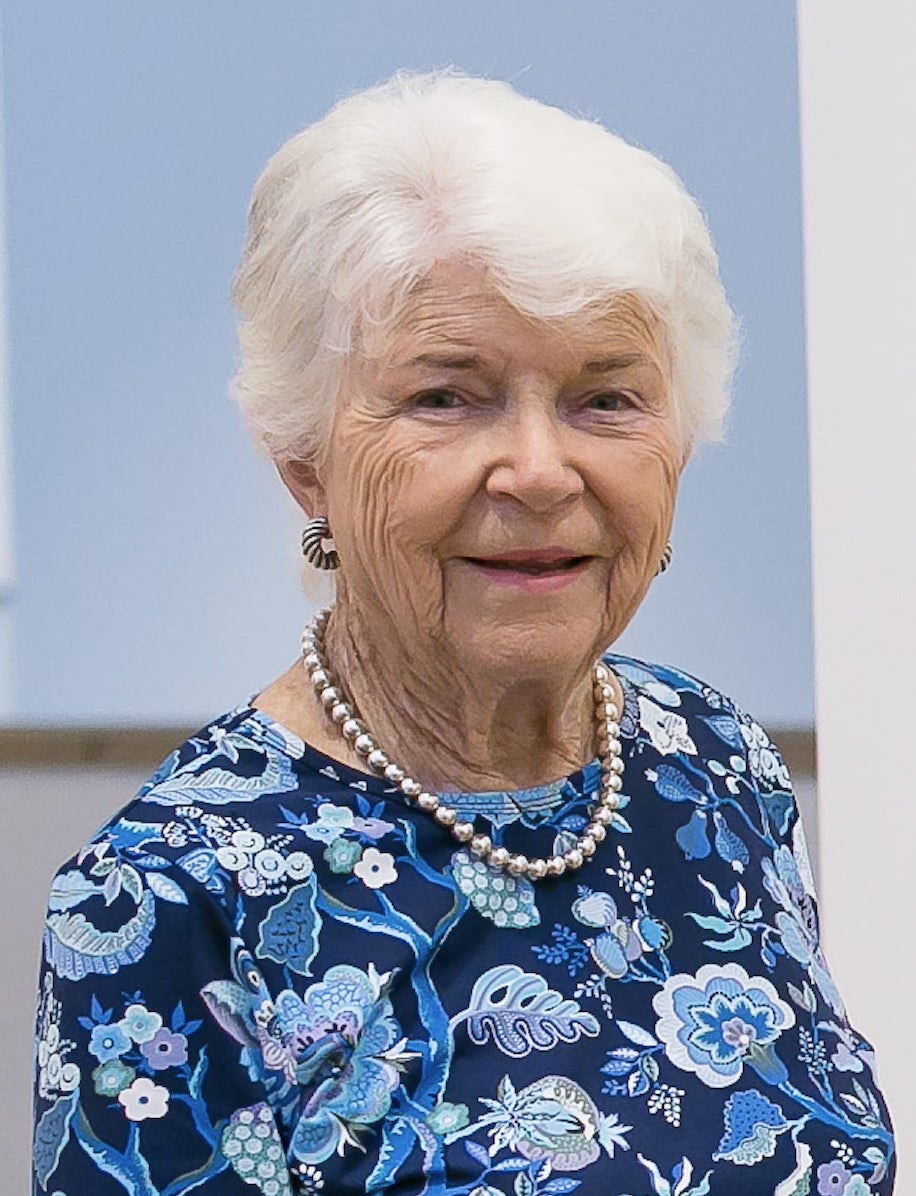Stanford donor Mary Margaret “Moo” Anderson died Oct. 22 at her Bay Area Peninsula home surrounded by her family. She was 92.
In 2011, Moo, her late husband, Harry “Hunk” Anderson, and their daughter, Mary Patricia “Putter” Anderson Pence, pledged the core of the family’s 20th-century American art collection to Stanford University. The original collection of 121 works by 86 artists housed in an award-winning building designed by Ennead Architects in Stanford’s arts district opened to the public in 2014 as the Anderson Collection at Stanford University.
Some of the foremost examples of post-World War II American art were part of the Anderson gift, which remains one of the most valuable and significant to be donated to any university.
The collection is anchored in New York School and Bay Area Figuration, and incorporates key modern and contemporary artists collected in depth and across media. Major movements represented include Abstract Expressionism, Color Field Painting, Post-Minimalism, California Funk Art, and Light and Space. Artists represented include Helen Frankenthaler, Franz Kline, Morris Louis, Agnes Martin, Joan Mitchell, Robert Motherwell, David Park, Mark Rothko, Frank Stella and Wayne Thiebaud. Key individual works include Jackson Pollock’s Lucifer, Willem de Kooning’s Woman Standing – Pink, Richard Diebenkorn’s Ocean Park #60, Sam Francis’ Red in Red, Philip Guston’s The Coat II, Ellsworth Kelly’s Black Ripe and Clyfford Still’s 1957-J No. 1.
Thirteen works were added to the collection in 2017 from other donors, including a painting by Los Angeles-based contemporary artist Mary Weatherford given by Debra and Steven Wisch, ’83, in honor of the Anderson family.
“Moo Anderson will forever be remembered for her love of art, but also for her love of sharing art,” said Stanford President Marc Tessier-Lavigne. “In the early days of her and Hunk’s collecting, she listened and learned from curators and art historians, and spent a great deal of time examining the artwork in museums, galleries and artists’ studios in person. She opened her home so that students could have that same experience of looking and learning about art. We are so deeply grateful that Moo and Hunk trusted Stanford to be stewards of their remarkable collection and enable people of all ages to experience it on a daily basis.”
‘In order to enjoy art, you have to share it’
In addition to assembling a world-class art collection, Moo, in particular, was intent on developing a library of art books, catalogs and ephemera related to the art, artists and movements represented in the collection. As part of the Andersons’ original gift, they donated a large percentage of that library to Stanford so that scholars are able to benefit from the same educational material as the family. Some are annotated by the Andersons or signed by authors or artists. The printed materials, housed in the Denning Family Resource Center at the museum, help fulfill the educational mission of the Anderson Collection and has become a vital library and teaching space within the museum.
But for Moo, nothing compared to seeing artwork in person. “It’s good to study art in books, but something happens in the presence of the original – it affects the brain, taste, feelings and more,” she commented at the opening of the Anderson Collection. When asked if she would miss having the art in her home, she replied, “I think in order to enjoy art, you have to share it.”
Born in Boston, Massachusetts, Moo’s family originally considered her an “East Coast gal.” She graduated from D’Youville College in Buffalo, New York, and met her future husband, Hunk Anderson, in Geneva, New York, during the summer in 1948. They were married there two years later, gradually making their way to Ohio and then to the San Francisco Bay Area to open the national headquarters for Saga, Hunk’s company, in 1964.
Around that time, Hunk and Moo Anderson started collecting art. In 1969, they turned their focus to postwar American art under the tutelage of Stanford’s Nathan Oliveira, artist and professor, and Albert Elsen, art historian and professor. She also participated in one of Elsen’s undergraduate courses, Purposes of Art, which was an introduction to the history and appreciation of art.
A little more than a decade after their first acquisitions, the Andersons had amassed a collection worthy of a graduate internship program for Stanford doctoral art history students that continues to this day. More than 30 doctoral candidates in art history at the university have interned at the Anderson family collection and the Anderson Collection at Stanford University, engaging in intensive study and curating exhibitions. Many have gone on to careers in the arts, and a number of former interns contributed scholarly texts to A Family Affair, a catalog that tells the story of how the Anderson family collection evolved and eventually how 121 pieces found a new home at Stanford.
After Hunk Anderson’s death in 2018, Moo and Putter continued to collect with a focus on emerging artists. Moo remained involved with the Anderson Collection at Stanford University until her death. She saw the collection grow through gifts from other members of the community, and generously loaned artwork from her private collection to the museum in order to engage visitors in new ways.
“The Andersons’ collecting philosophy rested upon their equal belief in the head and the hands – ingenuity as well as master craftsmanship. What that doesn’t mention is both Moo and Hunk led with their hearts,” said Jason Linetzky, director of the Anderson Collection. “Moo’s gifts of passion, of warmth and of believing that great art belongs to the world will forever energize the collection and the students and guests who visit and learn from it.”
Mary Margaret “Moo” Anderson is survived by her daughter, Mary Patricia “Putter” Anderson Pence, and granddaughter, Devin Pence, MBA ’19.
In lieu of flowers, donations in Moo’s memory may be made to the St. Francis Center.
Media Contacts
Beth Giudicessi, Cantor Arts Center and Anderson Collection: (650) 723-6096, egiudice@stanford.edu
Robin Wander, University Communications: (650) 724-6184, robin.wander@stanford.edu
